Beef Pork Leg Pork Blood W Vermicelli Noodle Soup
Home tastes like phở.
My parents were among the thousands of Vietnamese refugees that first brought the beef noodle soup to America 40 years ago. Since then, phở has spilled far and wide across the general American public consciousness, but for me, that smell of 13-hour beef broth wafting from the kitchen means home more than anything else.
The older generation uses phở as a gateway drug for us Vietnamese-American kids, a tool to reel us back into our culture even when we shun the language and grow embarrassed of our smelly Asian lunches. We're introduced to it first as a cold cure when we're sick, during weekend brunches, or at special family gatherings. But it's only the first of many piping-hot noodle soups that connect us with our culture.
If you want to understand Vietnam's regional cultures, geography, and people, look to noodle soup. In the more polished, Chinese-influenced urban centers of the north, broths tend to be light and clear like consomme with few garnishes. In the central highlands, seat of the ancient capital city of Huế and home to many of Vietnam's indigenous ethnic minorities, soup gets heavier and spicier, drawing influence from tropical ingredients and peasant food staples of the agricultural south and Mekong Delta regions.
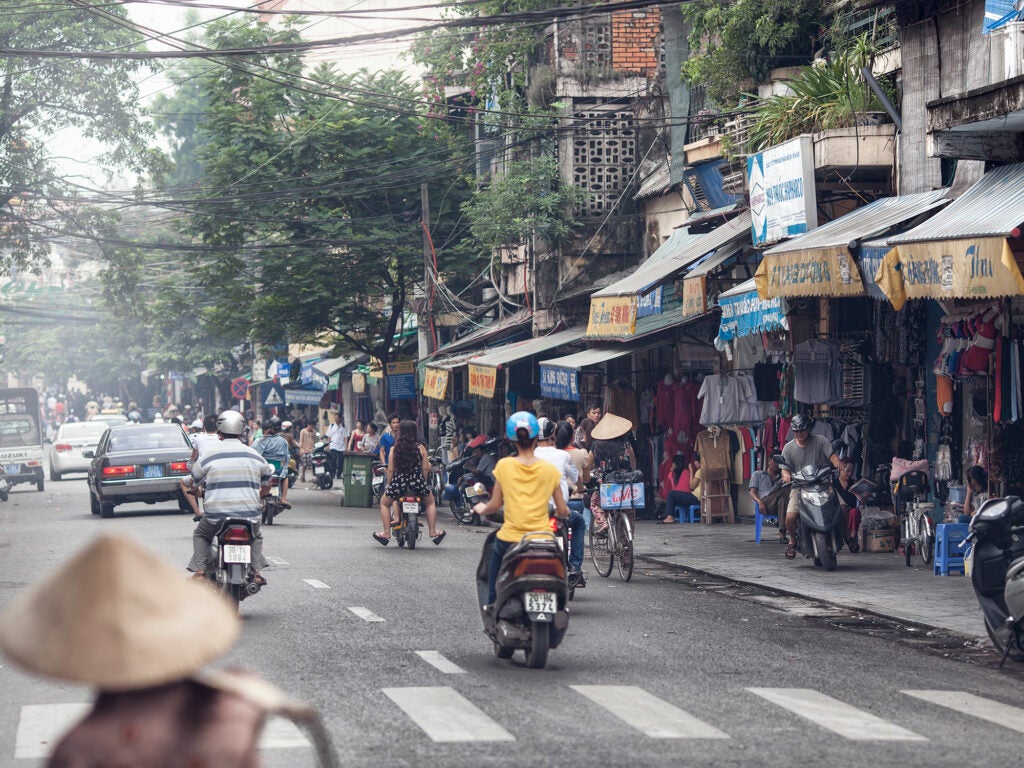
These regional tastes run deep. My father, who's from the north, would often prepare bún thang, a delicate, almost fastidious Hanoi dish topped with a julienned egg omelette, shredded chicken, and sliced chả lụa, or Vietnamese pork cold cuts (sometimes American deli meats made a cameo). By contrast, my Saigonese mother (she doesn't cook much, bless her heart) was most excited to introduce me to a Houston Chinatown restaurant called Hủ Tiếu Nam Vang, where the eponymous dish—hủ tiếu refers to a flat rice noodle; Nam Vang is the Vietnamese word for Phnom Penh—is an oily Cambodian number loaded with pork loaf, minced pork, garlic, and offal. It wasn't until I took my first solo journey to Vietnam that I fell in love with the act of slurping steamy streetside bún bò Huế, the fiery round-noodle, pigs'-blood-topped specialty of Vietnam's laid-back imperial capital of Huế.
Discerning the origins and specifications of these noodle soups is tough: Thousands of years of colonization (followed promptly by one of the world's most deadly wars) have not been kind to the country's written tradition. And in America, non-native speakers may not know where to find some of these lesser-known dishes, even in Vietnamese enclaves like San Jose, Houston, and New Orleans. But this much is obvious: there's a lot more to Vietnamese noodles than phở. Here's a guide to help you dig deeper.
But First: Know Your Noodles
The fifth-largest exporter of rice in the world, Vietnam produces many forms of rice noodle. You can find most of them at Asian specialty groceries, mostly dry, though on occasion fresh—my family settles for nothing less.
Bánh phở: Flat rice stick noodles, used in phở as well as pad Thai.
Bún: Thin, springy rice vermicelli used in a variety of Southeast Asian soups, noodle salads, and stir-fries.
Hủ tiếu: Can refer to chewy and clear thick noodles made from tapioca (these are called hủ tiếu dai) or smaller rice stick noodles like bánh phở. Called kuy teav, in Cambodia it's used in traditional Khmer breakfast dishes.
Mì: A little less defined, mì can refer to whole wheat noodles or egg noodles, depending on the dish. It's unclear why, but an exception is made for Mì Quảng, which is made with rice noodles. Fun fact: Instant noodles are called mì gói, or "package noodle" in Vietnamese.
Miến: Clear "cellophane noodles" made from a starch, typically mung beans or cassava. They are used in Korean japchae and Thai glass noodles.
Influenced by Chinese philosophy and Buddhism, Vietnamese cuisine is rooted in five cardinal flavors, each tied to one of the five natural elements: spicy represents metal, sour represents wood, bitter corresponds to fire, salty is water, and sweet is earth. Every dish, or at least every meal, should strike a balance of those flavors and elements.
Vietnamese noodle soups are masterpieces of this balance, not just in flavor but also texture: pliable strands of noodles, crunchy greens, slow-cooked beef, and crispy fried onions or pork cracklings. Broths, simmered for hours with a cabinet's worth of spices, get jolts of fire from an array of chile of sauces, lashes of sour lime, and whispers of the bitter, fragrant oils of fresh herbs.
Don't miss: Our Best Asian Soup Recipes
Beginning in the North and traveling southwards, here are the 10 essential styles of Vietnamese noodle soup.
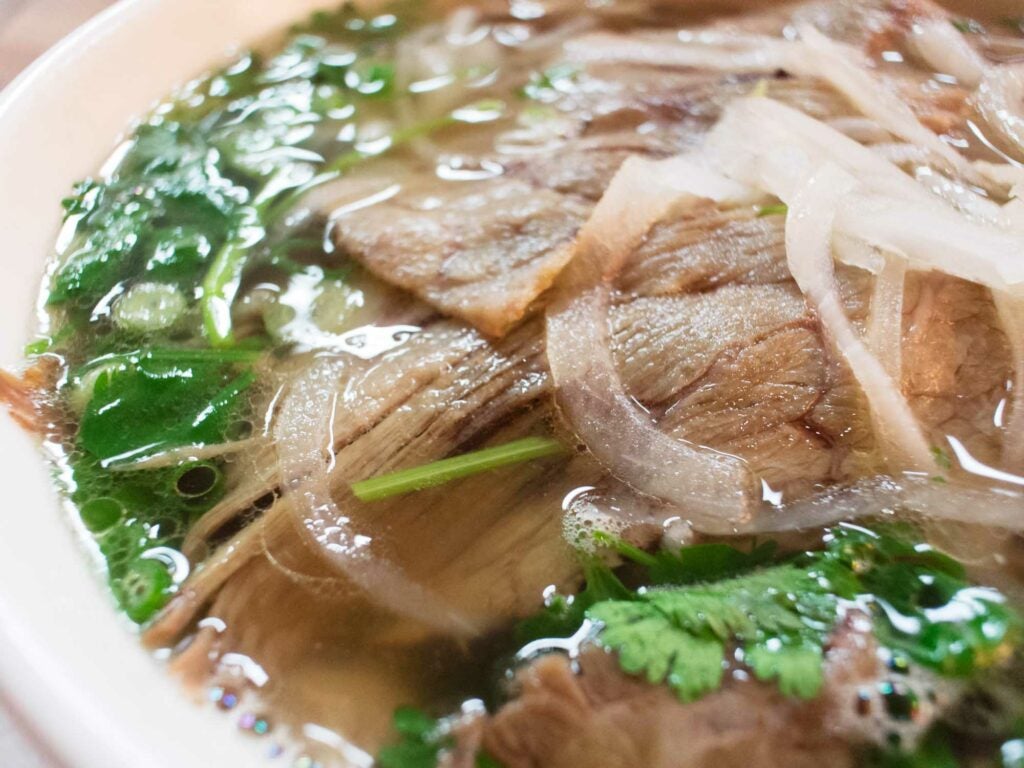
Phở
The hallmark of Vietnamese cooking and the country's national dish, the origins of phở are much murkier than its soothing broth. Though some have speculated that the phở is a Vietnam-ization of the French word feu, like the beef stew pot-au-feu, others, including Vietnamese cookbook author Andrea Nguyen, say that rice noodles entered by way of Chinese merchants in the earliest 20th century, and that phở is actually a corruption of the Cantonese word fun, or flat rice noodle.
Even more varied than phở's origin stories are the incarnations it now takes on. Phở bắc (northern-style phở) is minimally garnished and seasoned to emphasize the pure unadulterated beef broth that is made from simmering beef leg or oxtail with onion, ginger, star anise, and any number of other herbs and spices. If served with rare, thinly-sliced beef (tái) or meatballs (bò viên), the meat is dipped into a side dish filled with accompanying sauces, rather than dumped into the bowl.
In the south, expect a more anything-goes approach, with sauce joining meat and broth and tons of vegetables—bean sprouts, mint leaves, Thai basil, Thai chilies, sawtooth herb, and more. These two styles of beef soup course do not account for any range of variations like chicken phở, seafood phở, vegetarian phở, and phở saté.
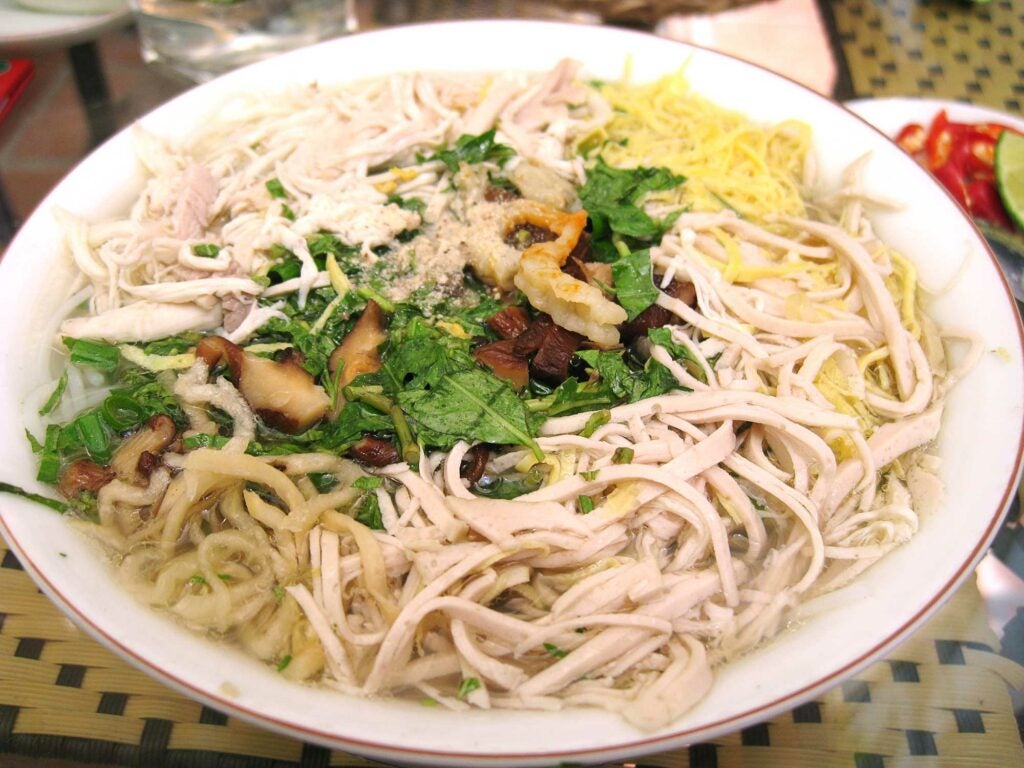
Bún Thang
Thang means "ladder" in Vietnamese, but since that doesn't translation make much sense with regards to broth and noodles, some historians are inclined to think that it's a translation of the Chinese word for soup, spelled tang.
Best known in northern Vietnam, it's a fortifying, soulful dish that truly exemplifies the principle of the five elements through sight, sound, and smell. The broth is prepared from a combination of chicken and pig bones, with shrimp added in early on or stirred in later as a paste called mắm tôm, while toppings include a multi-colored spread of julienned egg, Vietnamese ham, chicken, and green onions. In its most traditional Northern iteration (I admit, I've yet to try this), the dish is also topped with one or two drops of cà cuống, the pungent pheremones extracted from a giant Southeast Asian water bug.
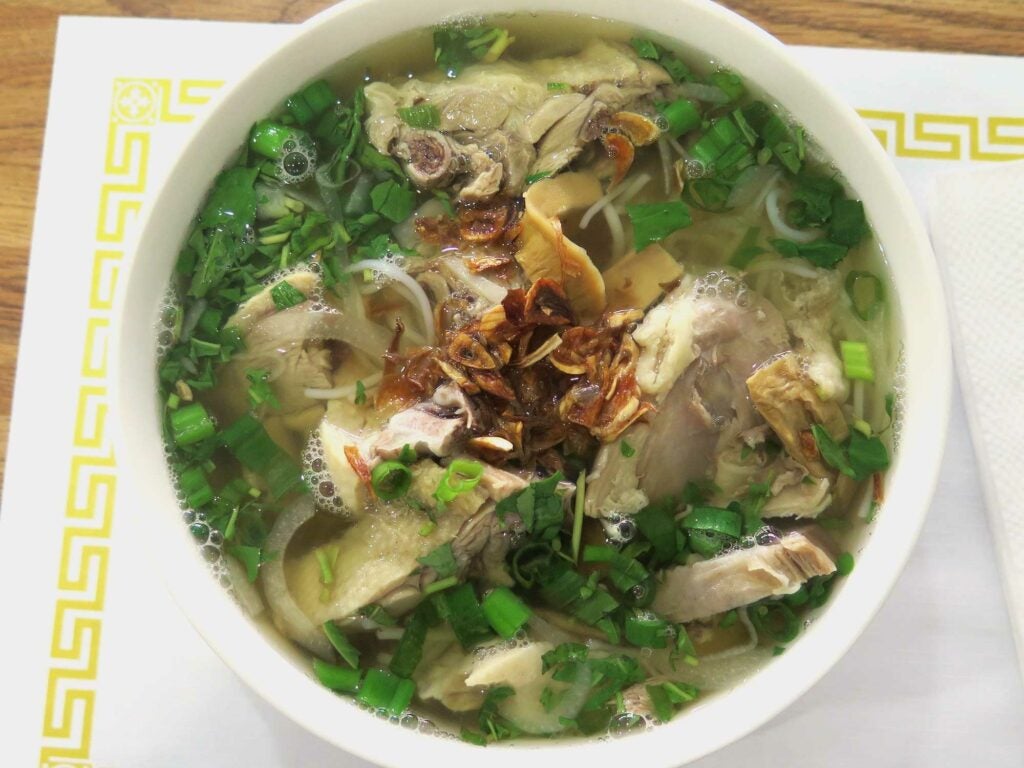
Bún Măng Vịt
Măng means bamboo and vịt means duck. While duck isn't as common in Vietnamese cooking as it is in some other Asian cuisines, the buttery richness of whole duck—boiled for close to an hour—stands up excellently against tangy bamboo shoots and savory fish sauce. It's finished off with or served with a side of fresh lettuce, cabbage, and mint.
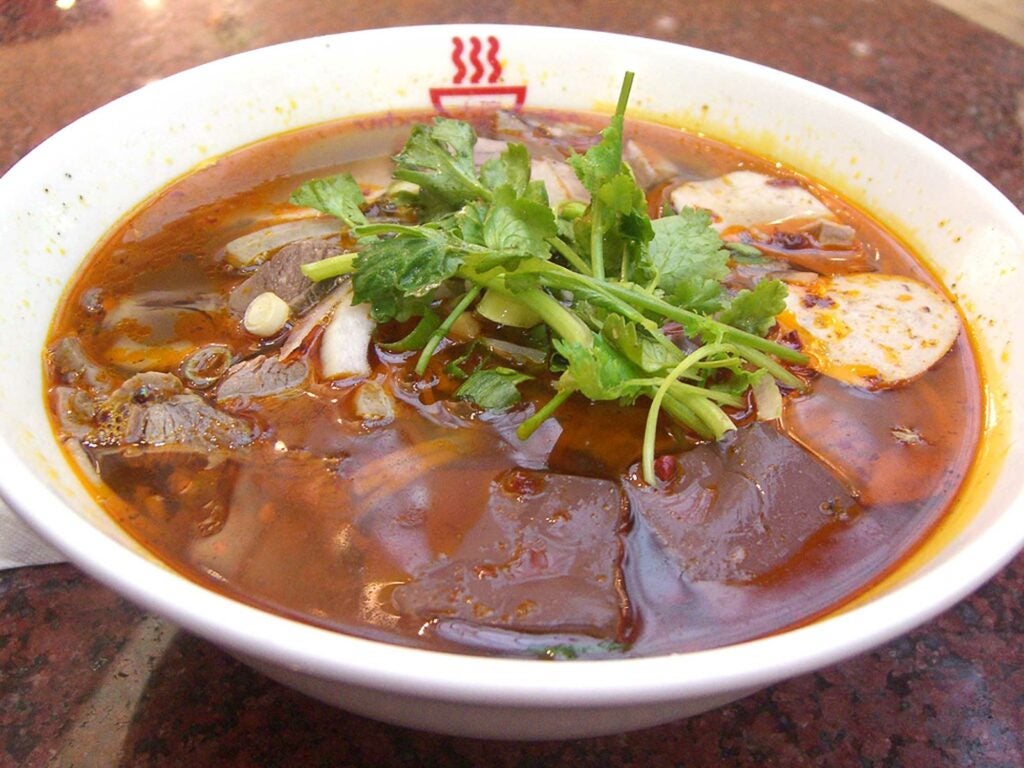
Bún Bò Huế
I may be biased to say so, but I stand by the claim that bún bò Huế (beef noodle of Huế city) is the most underrated dish in Vietnamese cooking. Huế, the longtime imperial capital of Vietnam and home of the former royal court, is a beautiful, relatively unhurried city whose people are much more mild-mannered than those in the larger cities of Hanoi and Saigon, partly due to the stronger emphasis on Buddhism. It's surprising then that the city's crown dish is so boldly flavored, using the extremes of spice and sour to offset salt and sweet.
The broth calls for beef bones and beef shank boiled with a generous dose of lemongrass, shrimp paste, and sugar—the red color comes from a spicy chile oil added during simmering. The noodles used may be called bún, but they're rounder and thicker than usual, easier for twirling up with hunks of meat like marinated beef shank, oxtail, pig's knuckles, and pig's blood congealed into maroon, tofu-like cubes. Upon serving, the bowl is presented with vegetables that can include lime wedges, scallions, cilantro, banana blossom, mint, basil, Vietnamese coriander, sawtooth herb, and mung bean sprouts.
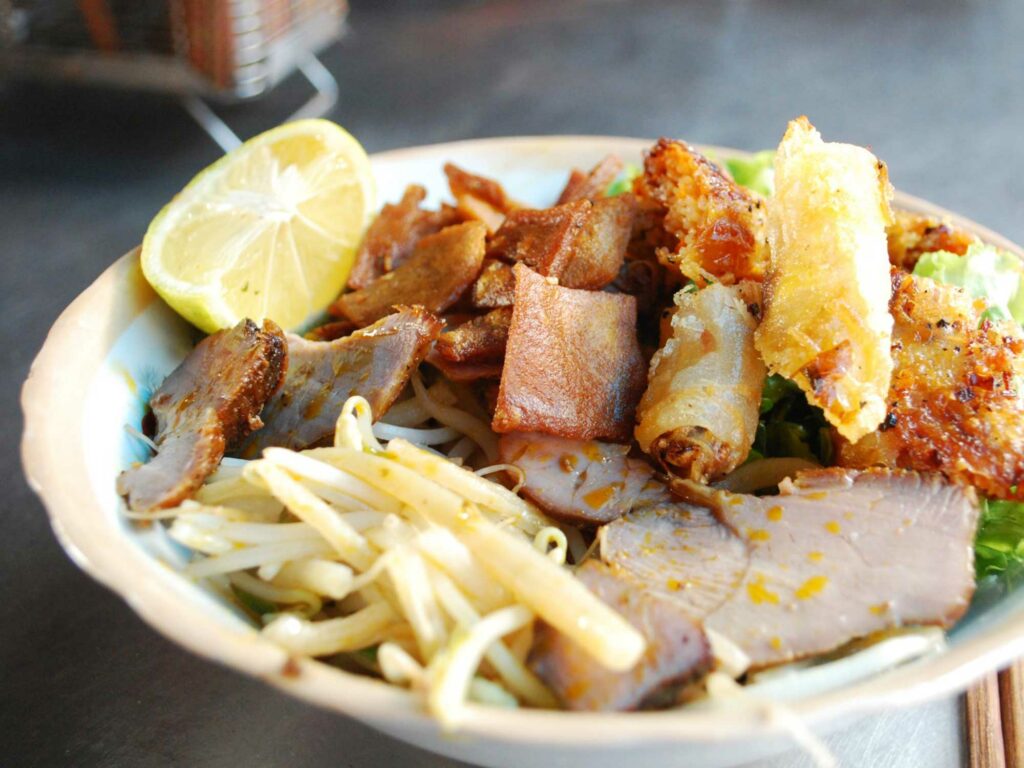
Cao Lầu
This unique, hard-to-explain dish from the historical trading port of Hoi An, Quang Nam Province, perfectly encapsulates the intersection of Vietnam's colonial history, its wealth of natural resources, and the ethnic diversity of its native peoples. At its core, cao lầu is a simple dish of noodles, pork, and herbs such as basil and mint. But the noodles, unlike all other you'll eat in Vietnam, have a springy, chewy quality reminiscent of ramen of pasta. That chewiness comes from soaking rice in a solution with lye—a liquid obtained from leaching wood and ash—and water drawn specifically from an ancient well built by the once glorious Hindu empire of Champa.
That Indianized civilization, which lasted until the early 1800s before being conquered by the Vietnamese, overlapped with a period where the city was flooded with merchants from France, China, and Japan. Traces of each group remain in Hoi An, which boasts a traditional Japanese-style bridge and French colonial architecture, as well as its principal dish. The dish's super-thick round noodles closely resemble Japanese udon and the pork, called xá xíu, is an adaptation of Chinese barbecue.
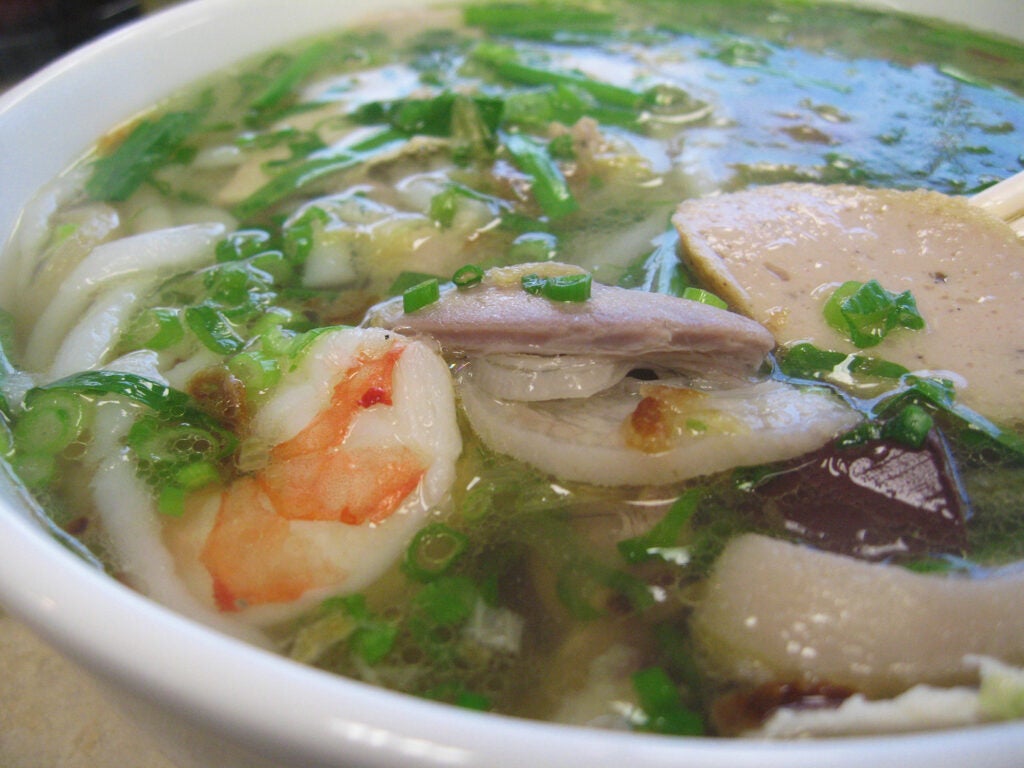
Bánh Canh
The Vietnamese answer to Chinese nian gao, or rice cake, this dish uses fat, round noodles cut directly from uncooked sheets of rice tapioca flour. There are several variations and toppings for the dish that range from bánh canh cua (crab) to a well-known version from the southeastern district of Trảng Bàng, which loads the noodles with boiled pork knuckle, fried shallots, and local herbs.
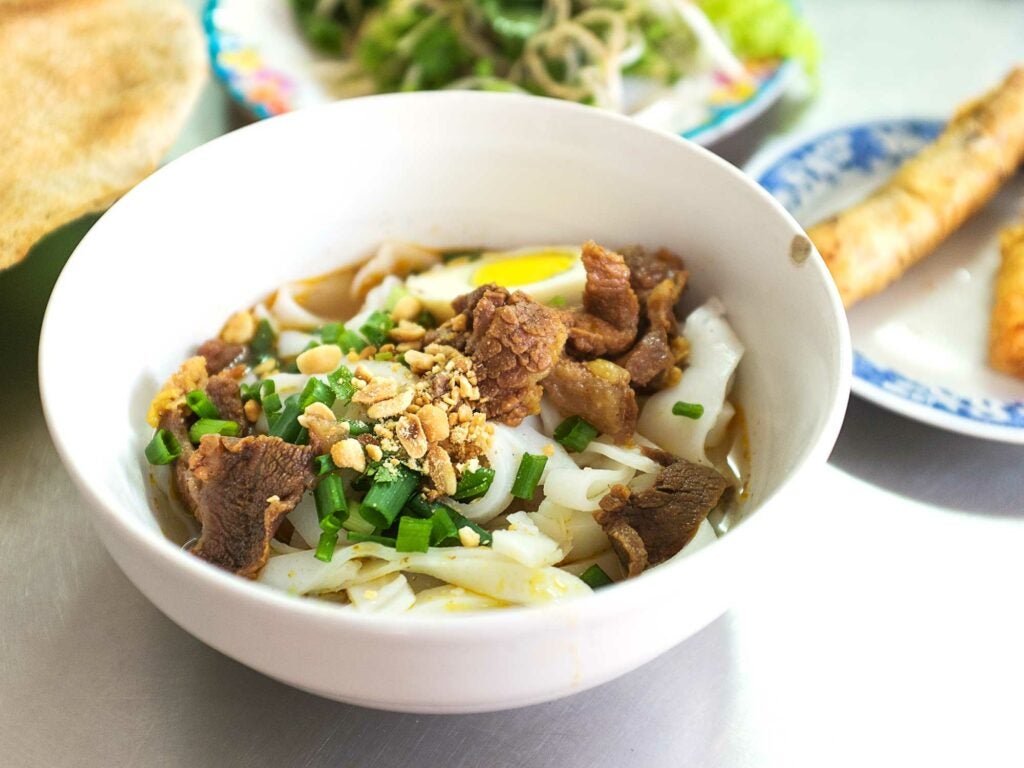
Mì Quảng
Beyond Hoi An, the central Quang Nam province is known for another distinctive noodle dish called mì Quảng, which uses a wide rice noodle sometimes laced with turmeric to give it a yellowish hue. While the broth is seasoned simply with various bones, fish sauce, black pepper, shallot, and garlic, the proteins make it a true surf-and-turf: it typically comes with shrimp and pork, but can also be trussed up with beef, chicken, and fish.
For texture, the final additions include bánh tráng (sesame-flecked rice crackers), fried green onions, and an array of the usual greens, such as Vietnamese coriander, mint, and banana blossom. Though mì Quảng can be served noodle-heavy with a low volume of concentrated broth, southerners often make a full soup out of it.
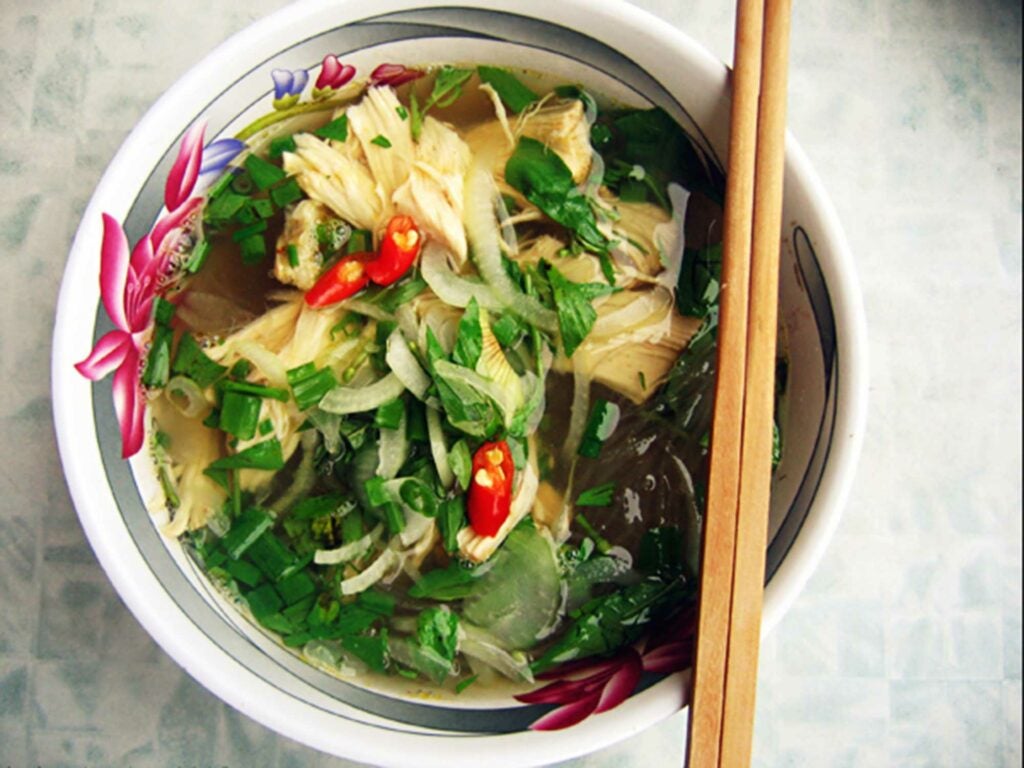
Miến Gà
Though the exact origin of this simply-prepared dish is unclear, the use of miến, or cellophane glass noodles, lends well to the notion that it is a Chinese-influenced northern recipe. But it's become a notorious dish at a number of restaurants in Saigon, namely Mai Xuân Cảnh in District 1, which is known for its southern takes on northern chicken dishes.
Light yet savory, the soup is served in homes during the Lunar New Year, as well as on the anniversary of a funeral or passing of a loved one. Seasoned only with the basic set of Vietnamese seasonings—black peppercorn, fish sauce, ginger—it's a chicken noodle soup remedy in the purest form.
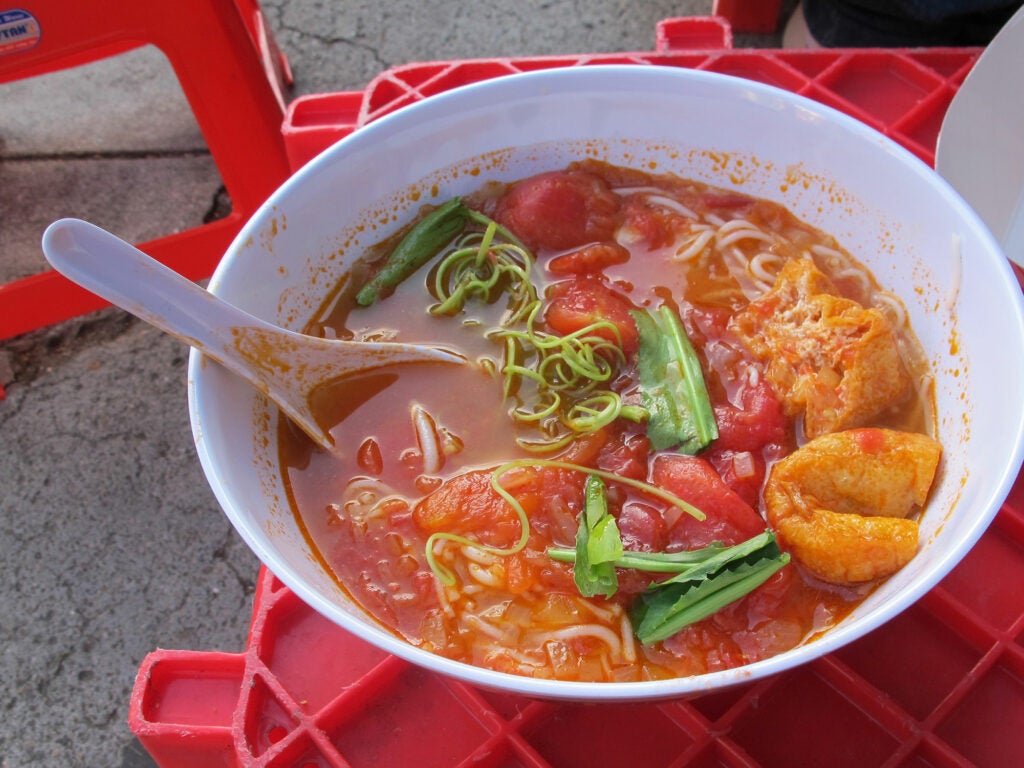
Bún Riêu
Die-hard southerners swear by this explosive vermicelli-and-pork soup made with tomato broth, shrimp and crab paste, tamarind, and eggs. To achieve its signature nuclear-red color, some Vietnamese cooks add annatto seed oil or tomato paste along with fresh Thai chiles for spice. For the riêu, or meat portion of the dish, freshwater crabs can be mixed with any combination of ground pork, fried tofu, and crab cakes; pig's blood is also used on occasion. For garnish, mint, water spinach, and banana blossoms add freshness and crunch to the otherwise heavy broth.
Though the crab-and-pork combination is standard, other popular variations include bún riêu tôm thịt, which comes with shrimp and beef, and bún riêu ốc, which comes with snail.
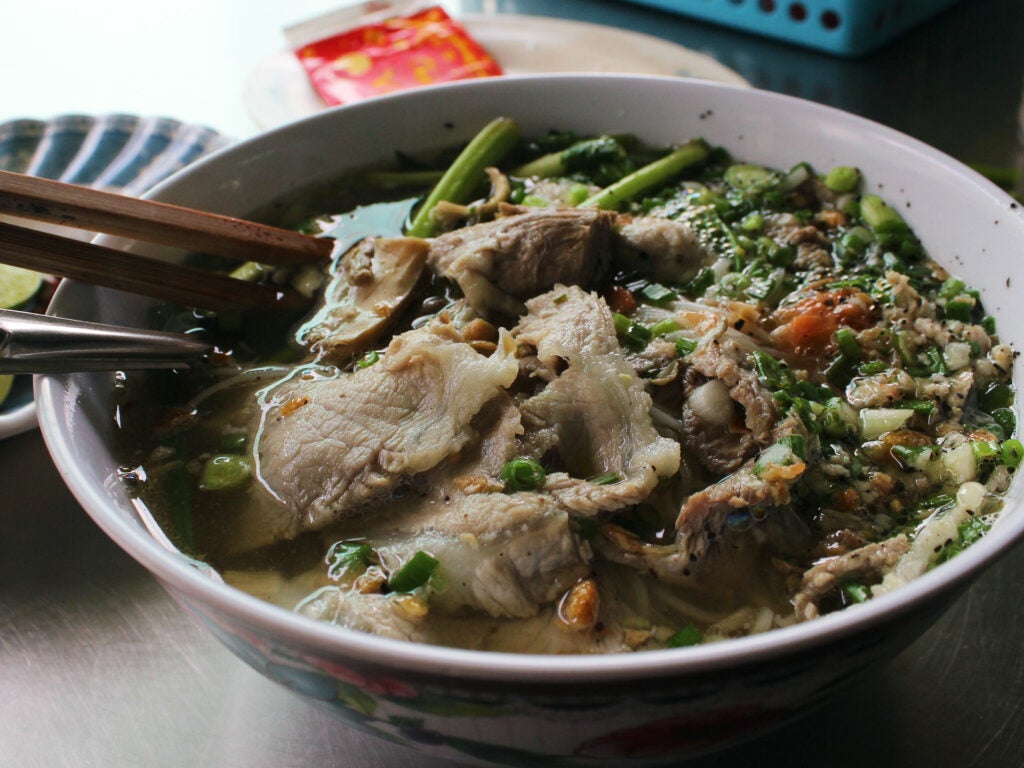
Hủ Tiếu Nam Vang
Today's Mekong River Delta was once the site of the Khmer Empire, prior to aggressive expansion by the Vietnamese in the 17th Century. This dish, popular in that deep south region, is borrowed from Cambodia ("Nam Vang" translates to Phnom Penh).
In the Vietnamese version of hủ tiếu, wider tapioca-based noodles are soaked in an umami-rich broth of pork bone and dried shrimp, then layered with several types of pork (ground pork, sliced liver, pork loin), as well as Chinese celery, basil, fried garlic and shallots. The sleeper hit of the dish is Chinese chive, which adds a slightly bitter, onion-y flavor that seeps into the hot soup. Optional toppings include quail eggs and shrimp.
Source: https://www.saveur.com/vietnamese-noodle-soup-guide/
0 Response to "Beef Pork Leg Pork Blood W Vermicelli Noodle Soup"
Post a Comment